Guía para la personalización de solenoides lineales
Empujar o tirar de / Cierre (Retener, Biestable) / Doble enganche
Solenoids are basically customized to individual applications. Follow guides, and email specific requirements and conditions of your application to inquire efficiently.
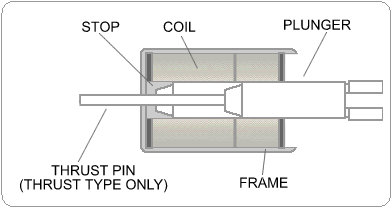 |
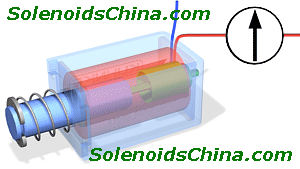 |
Minimum info. of requirements & conditions needed
- Function required: pull / push / latching / locking etc.
- Force/Stroke(Travel) needed: the prime output, Force drops sharply while stroke goes longer, so design stroke needed as short as possible.
- Duty cycle: on time / off time ratio (Max. on time): Solenoids heat up when power on, heat sinks when power off. This, as well as power consumption is related to overheating damage.
- Power supply: volts (AC or DC) and Tolerance; Any watts or amps limitations; Battery voltage drops while is used.
- Return Spring: Don't request spring if not necessary (load resets itself), side effect of spring is that it reduces solenoid force!
If spring is a must, where should it be? A. Outside spring on plunger as on the color animated picture (prefered) or B. Spring inside coil frame between the plunger and the stop (also named static plunger or iron core)
What spring force (troke) is needed? - Connections of Load:
- Plunger end structure for pull type solenoids (load affixed on plunger)
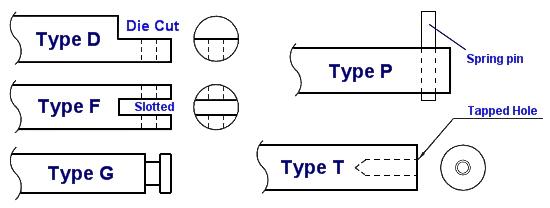
- Pushing Rod External End Configurations for Push Type Solenoids:

- Plunger end structure for pull type solenoids (load affixed on plunger)
| Self Latch / Keep / Hold / Maintain Solenoids | Double Latch / Keep / Hold / Matintain Solenoids |
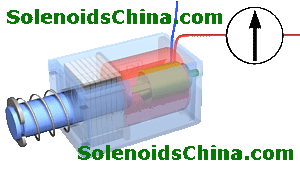 |
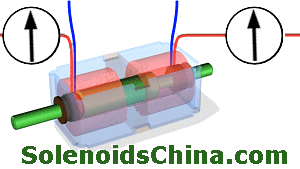 |
More Details of Solenoid_Design_Operation
Other Links: Linear Solenoids Push Solenoids Pull Solenoids Push/Pull Solenoids, Keep Solenoids, Electromagnets Swing Solenoids, Rotary Solenoids Solenoid Valves Solenoid Pumps Electromagnet Pumps Solenoids Coils China Solenoid solenoidi solenoidi.info Spule.info Germany Magnetventiler Spole.info solno?de ソレノイド.net solenide 螺线管 电磁铁 华强电子世界 电磁铁线圈 Solenoids solenoid coil electromagnet valve china factory china solenoids coils electromagnets valves Solenoide.info Solenoids electroimán соленоид соленоиды Solenoid Jargon Terms Solenoids India Indian Solenoid China Solenoid China Solenoids 电磁铁
